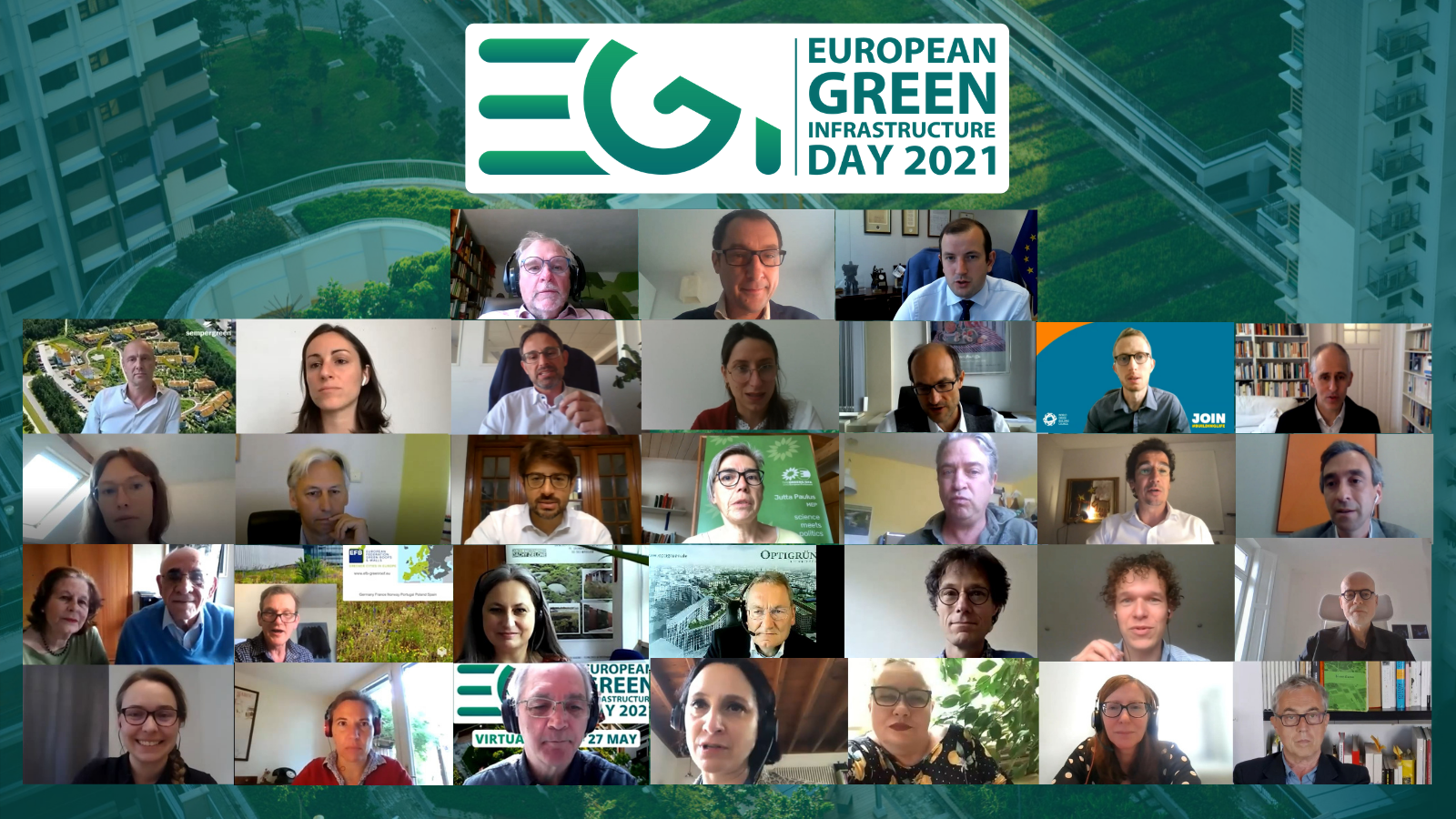
Policymakers, experts and representatives of national associations and green infrastructure industry discussed the state of affairs of urban green infrastructure in the European Union in a unique policy conference.
Urban green infrastructure, such as vegetated roofs and walls, can greatly support green economic recovery and Europe’s transition to a more sustainable and resilient society. This clearly emerged from the insightful discussions of the first European Green Infrastructure Day, hosted by the EU Chapter of the World Green Infrastructure Network throughout 27 May 2021.
The panels focused on urban biodiversity, green and efficient buildings, financing green infrastructure, exchanging best green roofs practices across Europe, green infrastructure and climate adaptation, and how to build more sustainable, healthier and human-centred cities.
Among the speakers were:
- Virginijus Sinkevičius, EU Commissioner for Environment, Oceans and Fisheries
- Stefano Boeri, Founding Partner, Studio Boeri Architetti
- Veronica Manfredi, Director for Quality of Life, DG Environment, European Commission
- Xavier Troussard, Head of Unit, New European Bauhaus, European Commission
- Aurelie Beauvais, Deputy CEO and Policy Director, Solar Power Europe
- Blaz Kurnik, Head of Climate Adaptation and LULUCF, European Environment Agency
View the full programme here.
You can watch the event recordings below and on our YouTube channel.
recordings:
- Opening remarks
- Green and blue over grey to increase urban biodiversity
- Turning buildings into carbon sink to drive the energy and climate transition
- Financing urban green infrastructure
- What’s up in Europe? News and views from across the EU
- Green infrastructure for climate adaptation: how to improve cities’ resilience by restoring the natural water cycle
- Let’s design human-centered, healthy and sustainable cities
- Conclusions



